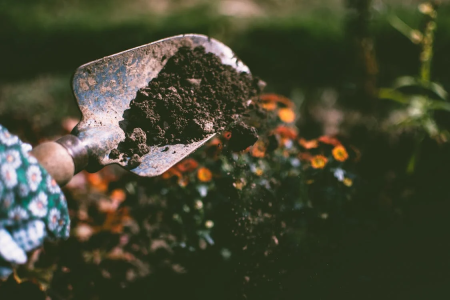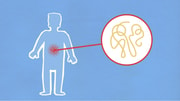She tried to restore local wildlife—then lost everything to red tape
By
Maan
- Replies 0
A Victorian farmer's peaceful roadside project ended in frustration and heartbreak.
Fifty-seven native plants—hand-raised and planted with care—were ripped out by council officers.
What began as a hopeful effort to restore local biodiversity has now sparked a divisive debate over fire safety and red tape.
Landscape architect Sarah Hunter had grand plans for the 400-metre nature strip in front of her family’s property in Doreen, on Melbourne’s outskirts.
She carefully germinated and planted 57 native saplings, many sourced from Indigenous nurseries, spending roughly $4 per plant in a bid to restore habitat and increase tree canopy on Middle Hut Road.
‘I put a lot of thought into the placement of the plants,’ Ms Hunter said, explaining that the saplings were intended to complement the existing yellow box eucalyptus trees.
Ms Hunter stressed there were no overhead power lines or underground services in the area, and she had ensured enough space for vehicles to safely pull over on the dirt road.
But Nillumbik Shire Council—the self-styled ‘green wedge shire’—took a different view.
Officers marked the saplings with spray paint and ordered Ms Hunter to remove them by the end of April, arguing the plants had been placed illegally and posed a fire risk.
Ms Hunter ignored the removal deadline and instead pleaded with the council to reconsider, pointing out the site had previously been designated an area of environmental significance.
Her retrospective permit application was denied.
Then, on 1 July, council officers arrived and uprooted all 57 saplings.
In a statement, the council said it was ‘committed to protecting and enhancing the shire’s biodiversity and environment in a safe and appropriate way’—but maintained that the trees had to go.
‘While the trees in Middle Hut Road have been planted with good intent, they are unfortunately illegal and hinder council’s ability to undertake crucial fire management and fire mitigation works,’ the statement read.
‘Middle Hut Road is a key fire safety area and council needs to be able to mow the roadside and ensure the necessary road clearance is maintained for emergency vehicles access.’
The council added that trees planted within road reserves required permits to ensure they did not interfere with these works.
‘The trees were identified for removal during routine inspections undertaken ahead of the fire season,’ it said.
It noted that any trees not obstructing fire mitigation efforts could remain and suggested the others could be replanted on private land.
But when Ms Hunter returned home to find the roadside bare, she claimed the council had left behind shattered glass, broken bottles, and even weeds like agave—while her native trees were gone.
Nillumbik did not respond to the allegation by the time of publication.
‘These plants would have provided habitat for the 70 bird species recorded in this area,’ she said.
‘The plants removed would have offset around 1.25 tonnes of carbon per year once mature…It’s such a waste of what could have been.’
Now, Ms Hunter is calling for change.
Instead of a rigid permit system, she believes residents should be offered clear biodiversity guidelines to help them contribute safely and legally.
‘Roadsides and nature strips are everywhere that humans are, and by definition in the places where biodiversity has been lost,’ she said.
‘It makes sense to use them as a space to put back some of that biodiversity, for wildlife but also to improve quality of life for humans.’
Community-led efforts to support environmental wellbeing often spark bigger conversations about how systems can better work alongside individual initiatives.
Just as residents push for smarter, safer ways to enhance their surroundings, governments are also launching programs designed to improve lives on a broader scale.
One such effort focuses on early detection in healthcare—a proactive step that could save thousands of lives each year.
Read more: Australia launches screening program, targets early detection to save thousands

Should red tape ever outweigh local efforts to restore nature?
Fifty-seven native plants—hand-raised and planted with care—were ripped out by council officers.
What began as a hopeful effort to restore local biodiversity has now sparked a divisive debate over fire safety and red tape.
Landscape architect Sarah Hunter had grand plans for the 400-metre nature strip in front of her family’s property in Doreen, on Melbourne’s outskirts.
She carefully germinated and planted 57 native saplings, many sourced from Indigenous nurseries, spending roughly $4 per plant in a bid to restore habitat and increase tree canopy on Middle Hut Road.
‘I put a lot of thought into the placement of the plants,’ Ms Hunter said, explaining that the saplings were intended to complement the existing yellow box eucalyptus trees.
Ms Hunter stressed there were no overhead power lines or underground services in the area, and she had ensured enough space for vehicles to safely pull over on the dirt road.
But Nillumbik Shire Council—the self-styled ‘green wedge shire’—took a different view.
Officers marked the saplings with spray paint and ordered Ms Hunter to remove them by the end of April, arguing the plants had been placed illegally and posed a fire risk.
Ms Hunter ignored the removal deadline and instead pleaded with the council to reconsider, pointing out the site had previously been designated an area of environmental significance.
Her retrospective permit application was denied.
Then, on 1 July, council officers arrived and uprooted all 57 saplings.
In a statement, the council said it was ‘committed to protecting and enhancing the shire’s biodiversity and environment in a safe and appropriate way’—but maintained that the trees had to go.
‘While the trees in Middle Hut Road have been planted with good intent, they are unfortunately illegal and hinder council’s ability to undertake crucial fire management and fire mitigation works,’ the statement read.
‘Middle Hut Road is a key fire safety area and council needs to be able to mow the roadside and ensure the necessary road clearance is maintained for emergency vehicles access.’
The council added that trees planted within road reserves required permits to ensure they did not interfere with these works.
‘The trees were identified for removal during routine inspections undertaken ahead of the fire season,’ it said.
It noted that any trees not obstructing fire mitigation efforts could remain and suggested the others could be replanted on private land.
But when Ms Hunter returned home to find the roadside bare, she claimed the council had left behind shattered glass, broken bottles, and even weeds like agave—while her native trees were gone.
Nillumbik did not respond to the allegation by the time of publication.
‘These plants would have provided habitat for the 70 bird species recorded in this area,’ she said.
‘The plants removed would have offset around 1.25 tonnes of carbon per year once mature…It’s such a waste of what could have been.’
Now, Ms Hunter is calling for change.
Instead of a rigid permit system, she believes residents should be offered clear biodiversity guidelines to help them contribute safely and legally.
‘Roadsides and nature strips are everywhere that humans are, and by definition in the places where biodiversity has been lost,’ she said.
‘It makes sense to use them as a space to put back some of that biodiversity, for wildlife but also to improve quality of life for humans.’
Community-led efforts to support environmental wellbeing often spark bigger conversations about how systems can better work alongside individual initiatives.
Just as residents push for smarter, safer ways to enhance their surroundings, governments are also launching programs designed to improve lives on a broader scale.
One such effort focuses on early detection in healthcare—a proactive step that could save thousands of lives each year.
Read more: Australia launches screening program, targets early detection to save thousands
Key Takeaways
- A Melbourne woman planted 57 native trees on a rural roadside to support biodiversity.
- Council removed the plants, citing fire safety concerns and permit violations.
- The removal sparked debate over environmental efforts versus regulatory compliance.
- The resident is now pushing for more accessible biodiversity guidelines for locals.
Should red tape ever outweigh local efforts to restore nature?








